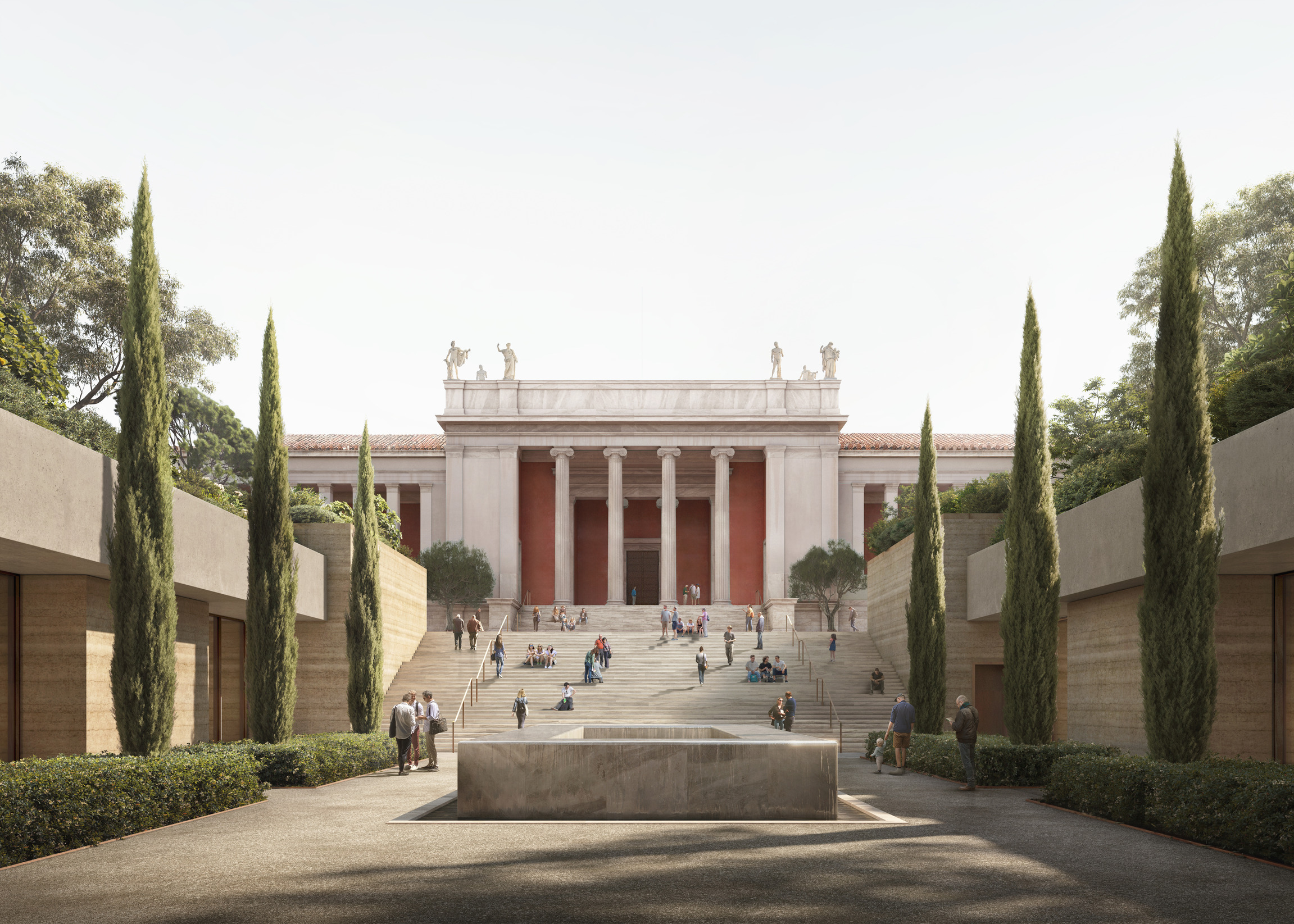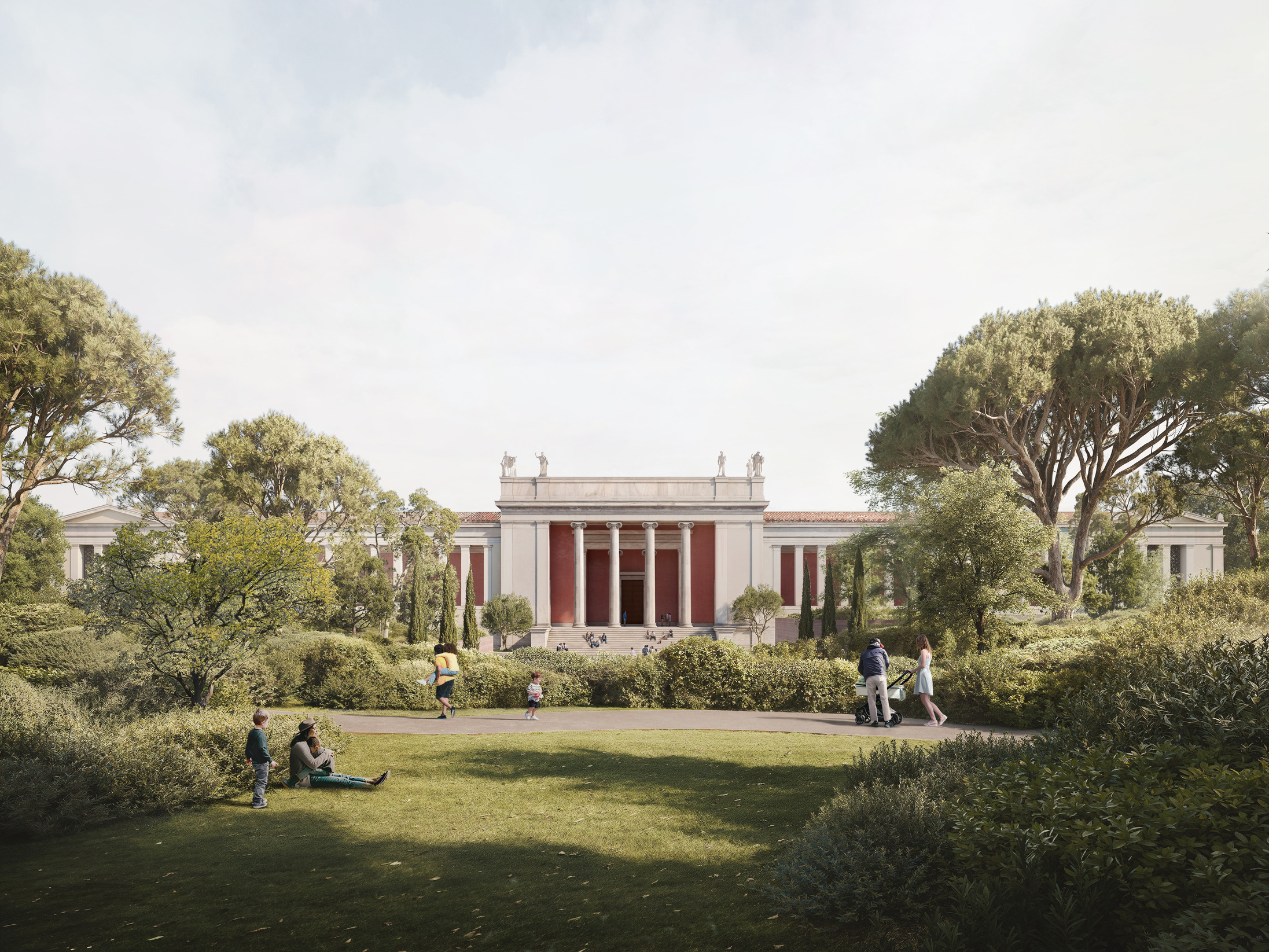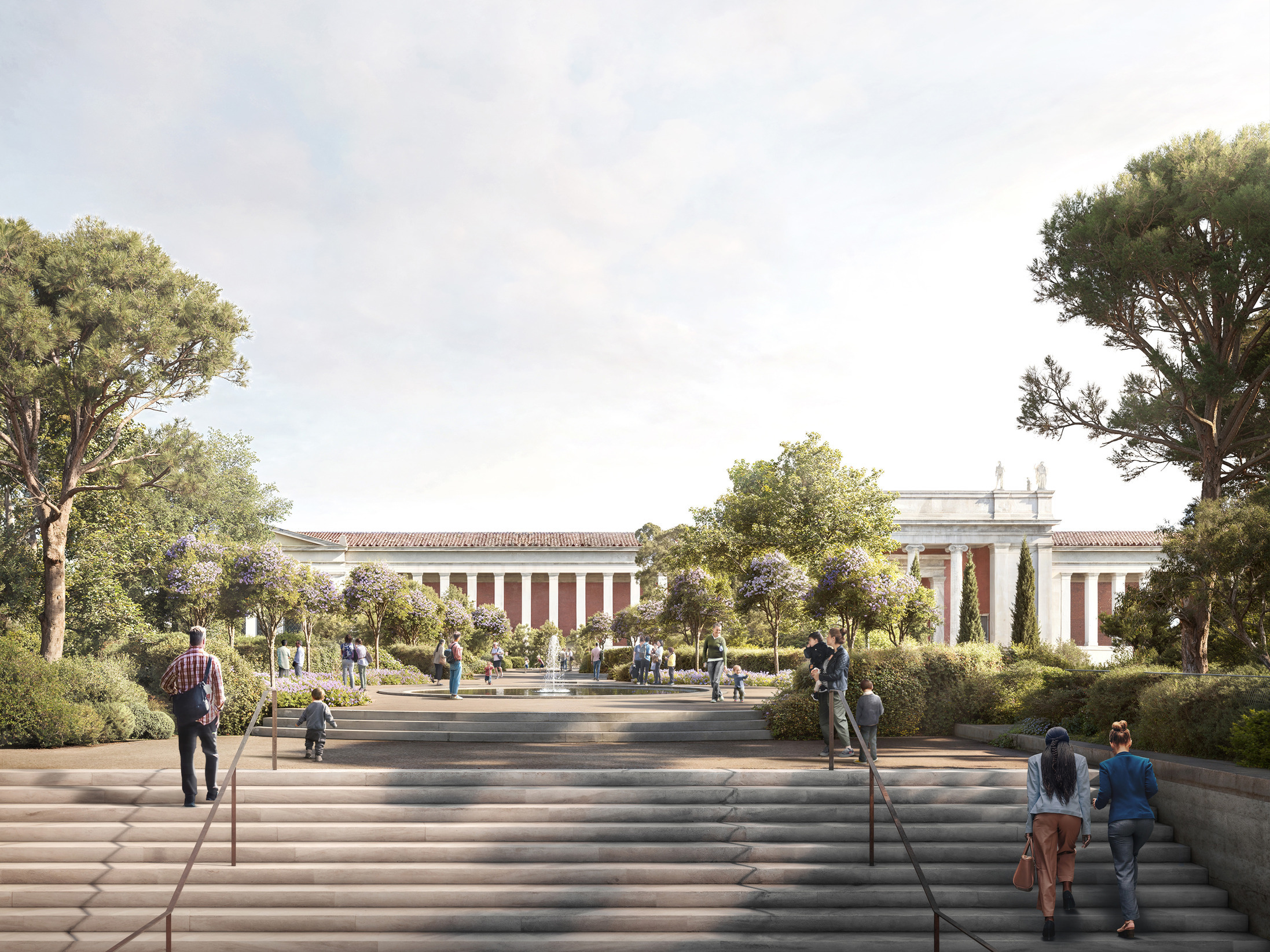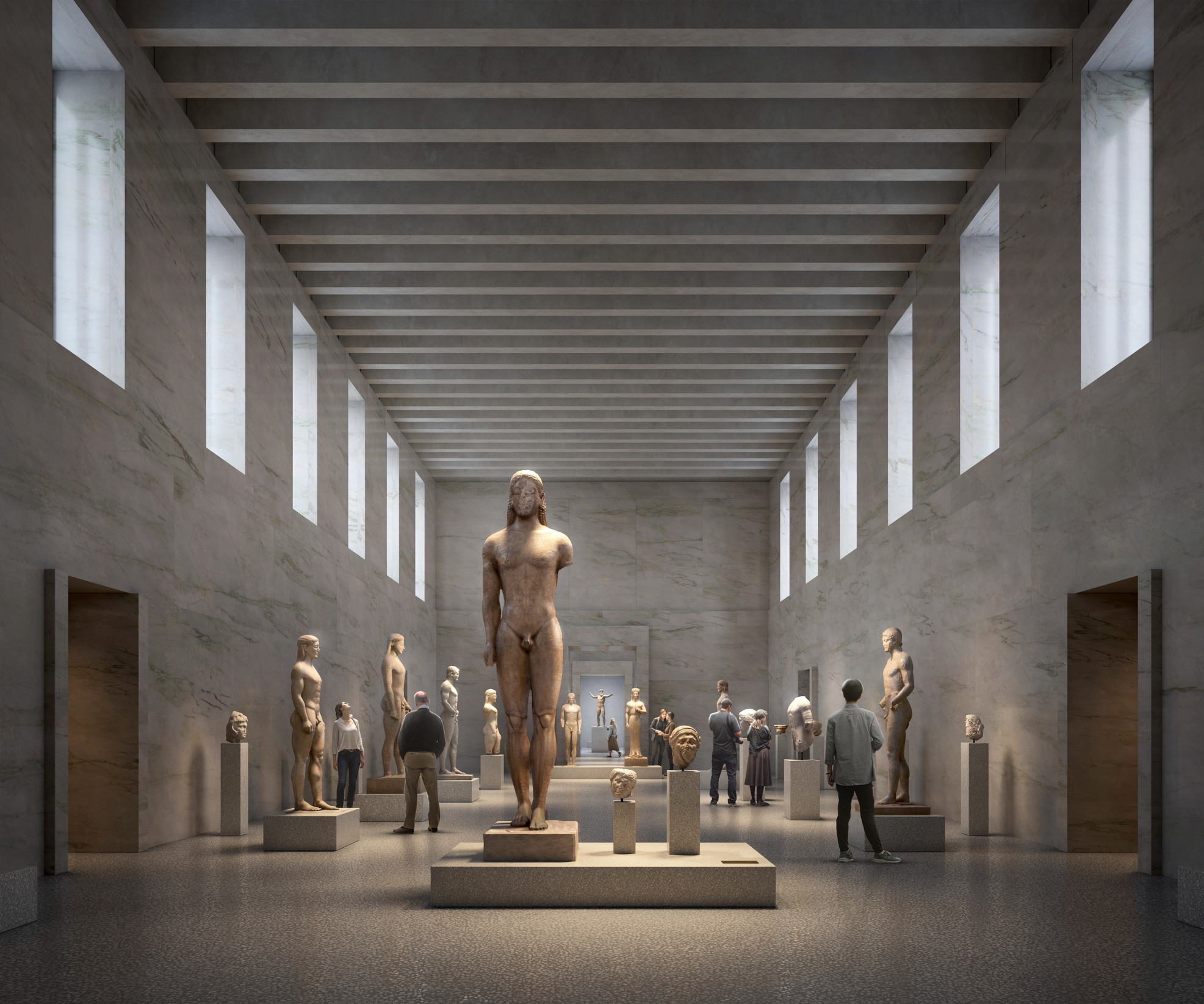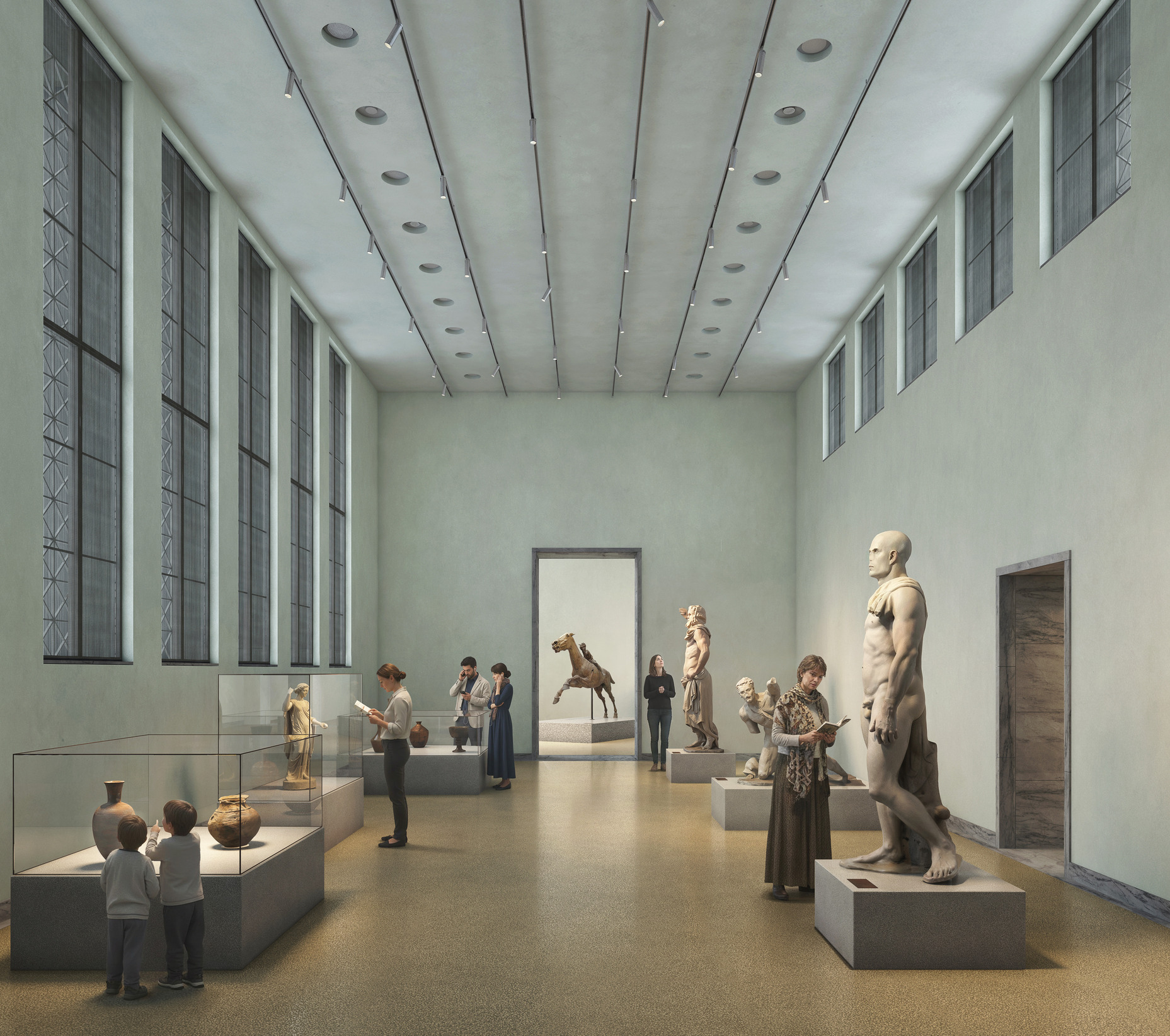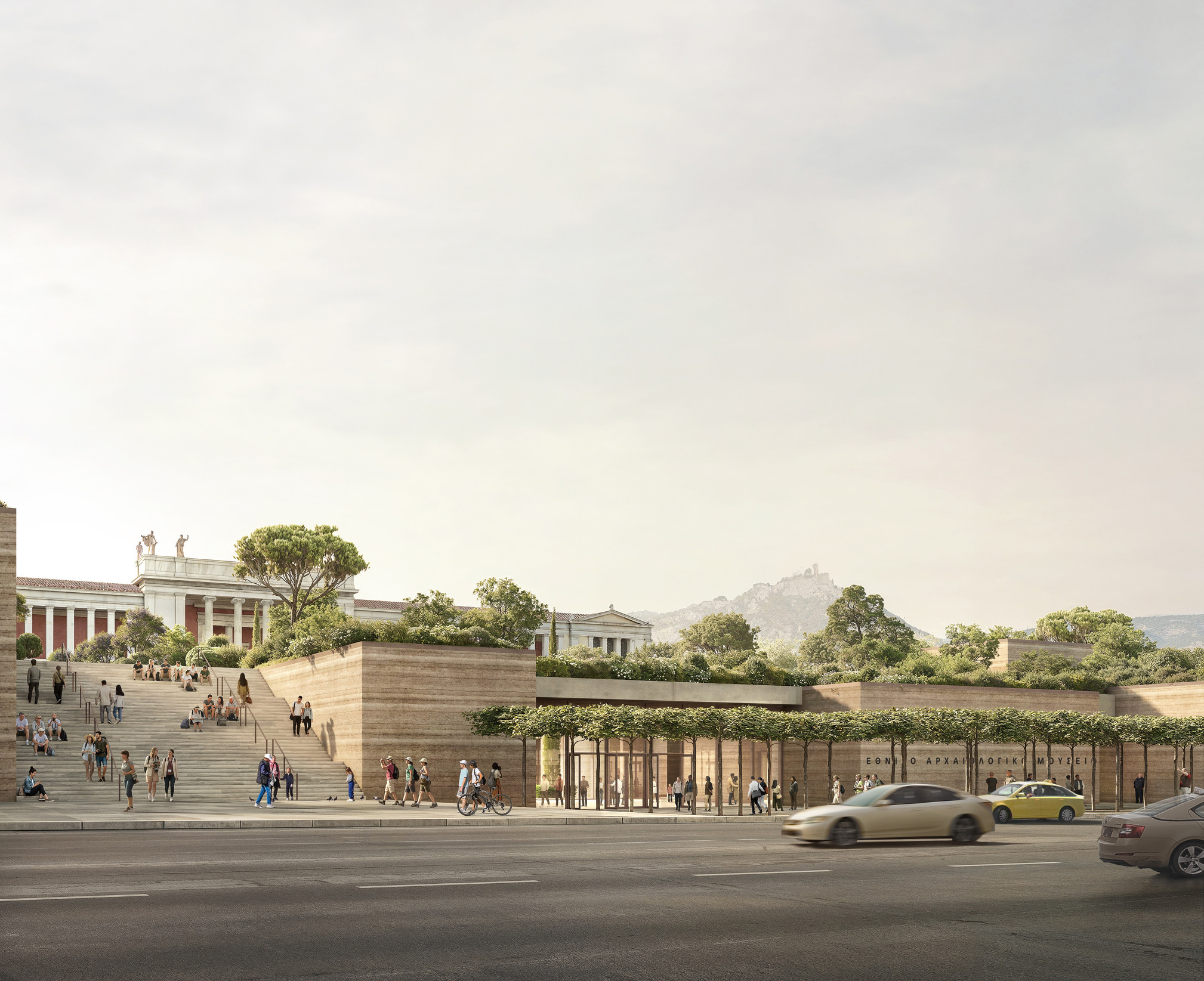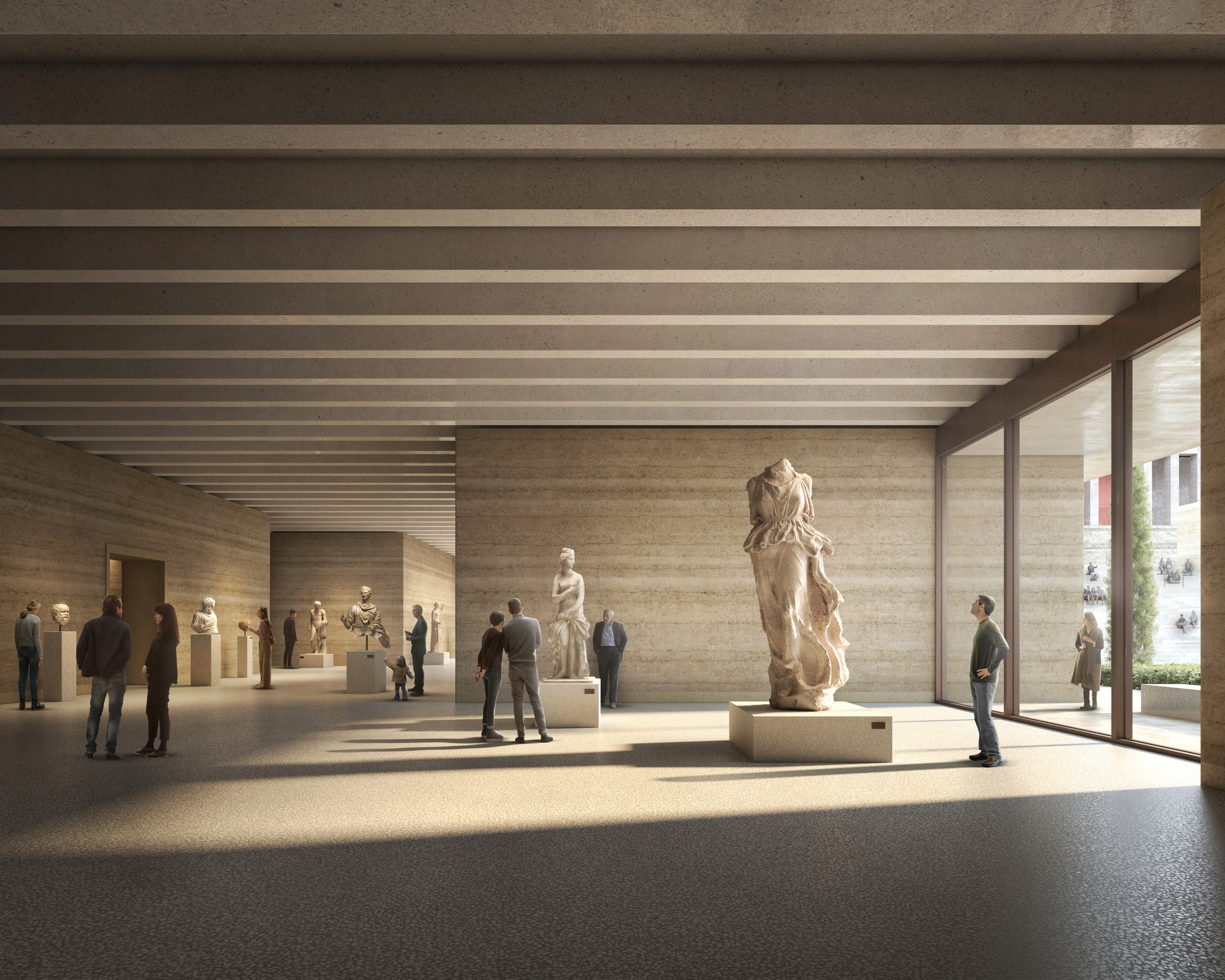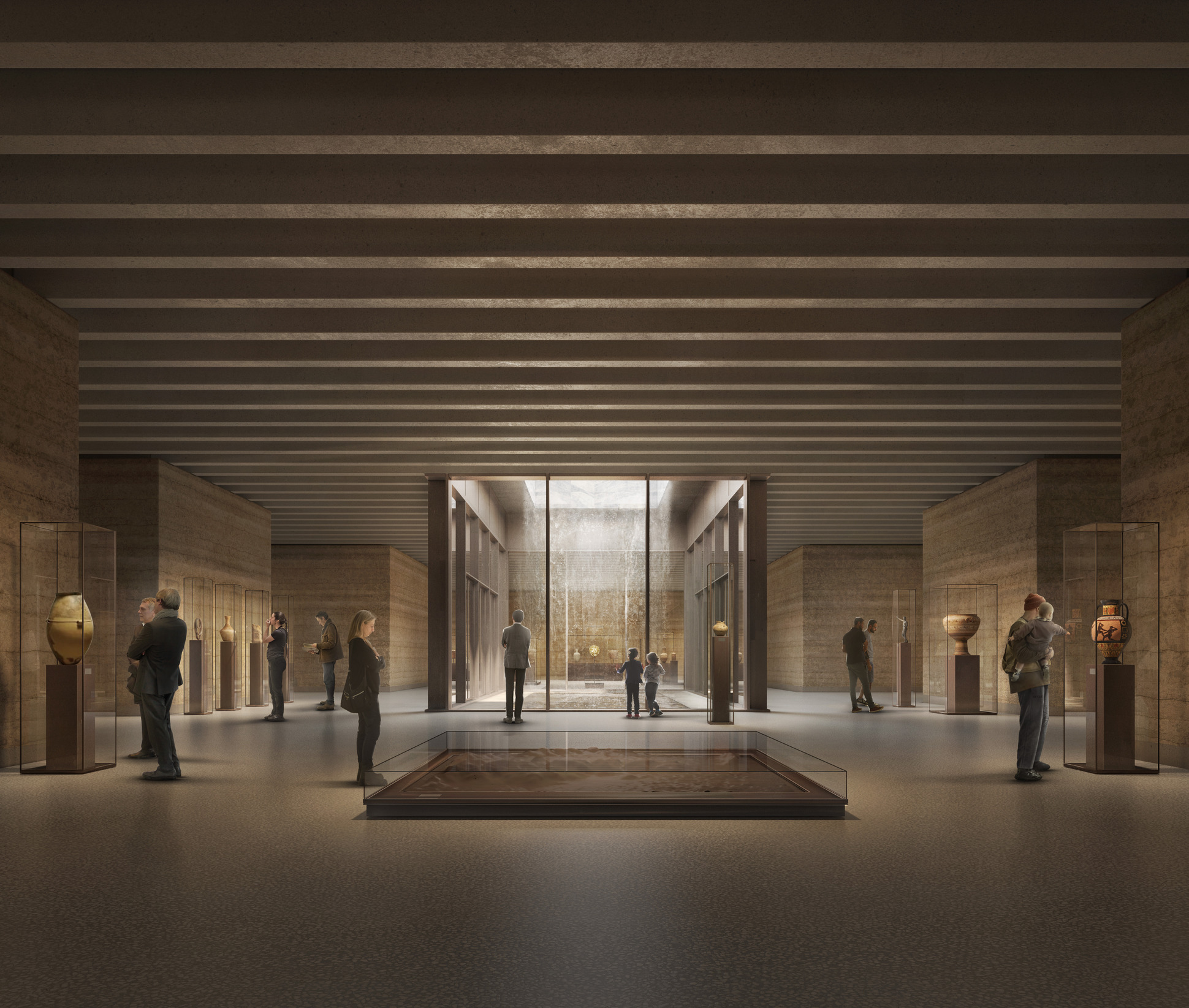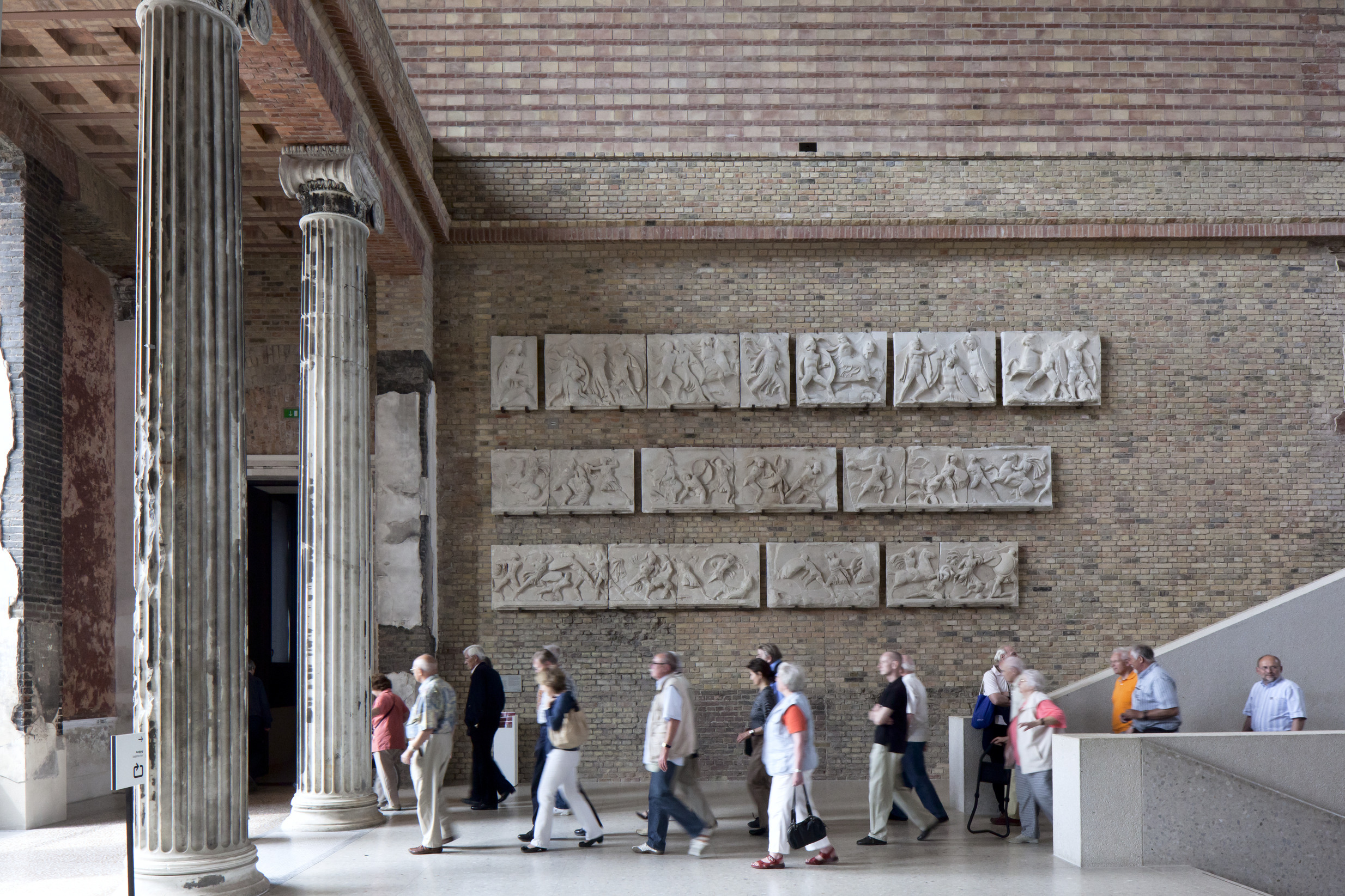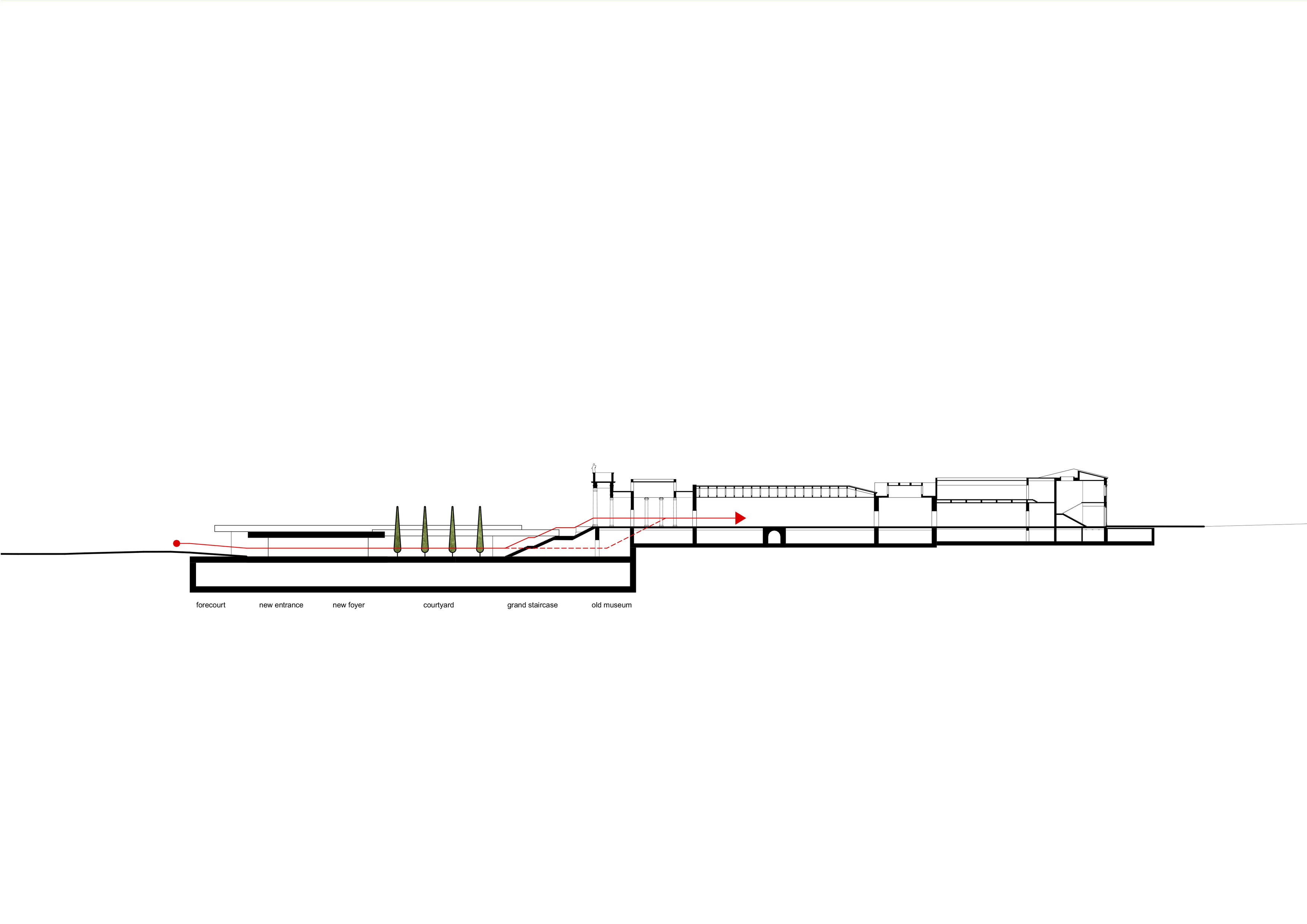National Archaeological Museum
Athens, Greece
2022–
The Hellenic National Archaeological Museum holds the world’s finest and most important collection of prehistoric and ancient Greek art. The neoclassical building was designed by Ludwig Lange and Ernst Ziller and constructed between 1866 and 1889. Taking up the equivalent of several city blocks in the densely packed Exarcheia district, the building overlooks the public space of the museum garden. The major extension and refurbishment was commissioned in recognition of the institution’s need to expand exhibition space and programme as well as to meet international sustainability and museum standards.
Drawing on the spirit of the original design – a romantic philhellenic idea of an urban landscape – the proposal creates a new setting for the monumental building. Respecting the classical hierarchy and responding to the existing topography, the plinth of the existing building is extended all the way to the street, allowing the original structure to maintain its symbolic power. In one gesture, this generates roughly 20,000 square metres of additional space including two floors of galleries beneath a raised landscape, framing the historical building with nature.
The museum garden provides a quiet, green public space elevated above the bustling city and recalls the ancient Greek ideal of a civic gathering place. The landscape, designed by Wirtz International, contains gravel paths, lawns, groups of Umbrella and Aleppo pines, evergreen Holm oaks and shrubs, referencing nineteenth-century parks. Accessible from all directions, it contains a sunken, sheltered courtyard at the centre. The existing monumental staircase is extended into this space, binding together old and new, and providing a meeting point for museum visitors and Athenians.
Archaic hall in the existing building
The new Classical hall in the existing building
Refurbishment of the 1950s galleries
The monument requires significant functional and technical upgrades across both the public and back-of-house areas, including improved earthquake resilience, enhanced security standards, a stable indoor climate and better conditions for handling and storing artworks. On the ground floor, a central axis creates a coherent sequence of rooms that presents the development of Greek sculpture, culminating in the new Classical Hall. The annex, built in 1930 by George Nomikos, is transformed into a research centre housing a research library, state-of-the-art laboratories and study collections.
The extension contains the museum’s most public-facing functions – the entrance hall, museum shop, café and restaurant, as well as an auditorium and permanent and temporary exhibitions spaces. The entrance is brought forward to the street, reinforcing the museum’s relationship with the city, while the largely glazed façade offers the public views into the new building.
The plan is made up of a series of dispersed monolithic volumes that define a fluid sequence of spaces that draw visitors towards the historic building and offer oblique views into the galleries along the way. The rammed-earth walls reinforce the excavated nature of the extension and together with the play of light and shadow form distinctive settings for exhibiting artefacts and sculptures that enrich the historic exhibition spaces.
Data and credits
- Competition
- 2022
- Project start
- 2024
- Client
- Ministry of Culture and Sports, Greece
- User
- Hellenic National Archaeological Museum, Athens
- Architect
- David Chipperfield Architects Berlin
- Partners
- David Chipperfield, Martin Reichert, Alexander Schwarz
- Project architect
- Annette Flohrschütz and Franziska Rusch (Competition)
Christian Richardt (Project) - Project team
- Josephin Brewitt, Anke Fritzsch, Viola Fabi, Dirk Gschwind, Kristin Karig, Ângela Monteiro, Torsten Richter, Mariska Rohde, Diana Schaffrannek, Ida Steffen, Matthijs Sioen, Nils Stelter, Urs Vogt, Christian Vornholt, Ute Zscharnt
- Competition team
- Bernhard Danigel, Anke Fritzsch, Kolja Hein
Graphics: Ute Zscharnt - Executive architect
- Tombazis and Associates Architects S.A., Athens
- Landscape architect
- Wirtz International Landscape Architects, Schoten
H. Pangalou & Associates Landscape Architects, Athens - Structural engineer
- wh-p GmbH Beratende Ingenieure, Stuttgart
TriPod Structural and Seismic Design IKE, Kifisia (existing building)
Helliniki Meletitiki S.A., Athens (extension) - Sustainability consultant
- Werner Sobek, Berlin
- Building Services
- Werner Sobek, Berlin
LDK Consultants, Athens - Fire consultant
- Panagiotis Samaras Engineering, Glyfada
- Lighting consultant
- Kardorff Ingenieure Lichtplanung, Berlin
- Exhibition design consultant
- Atelier Brückner, Stuttgart
- Visualisations
- Filippo Bolognese Images
- Video
- David Thibaut, Luna Zscharnt
